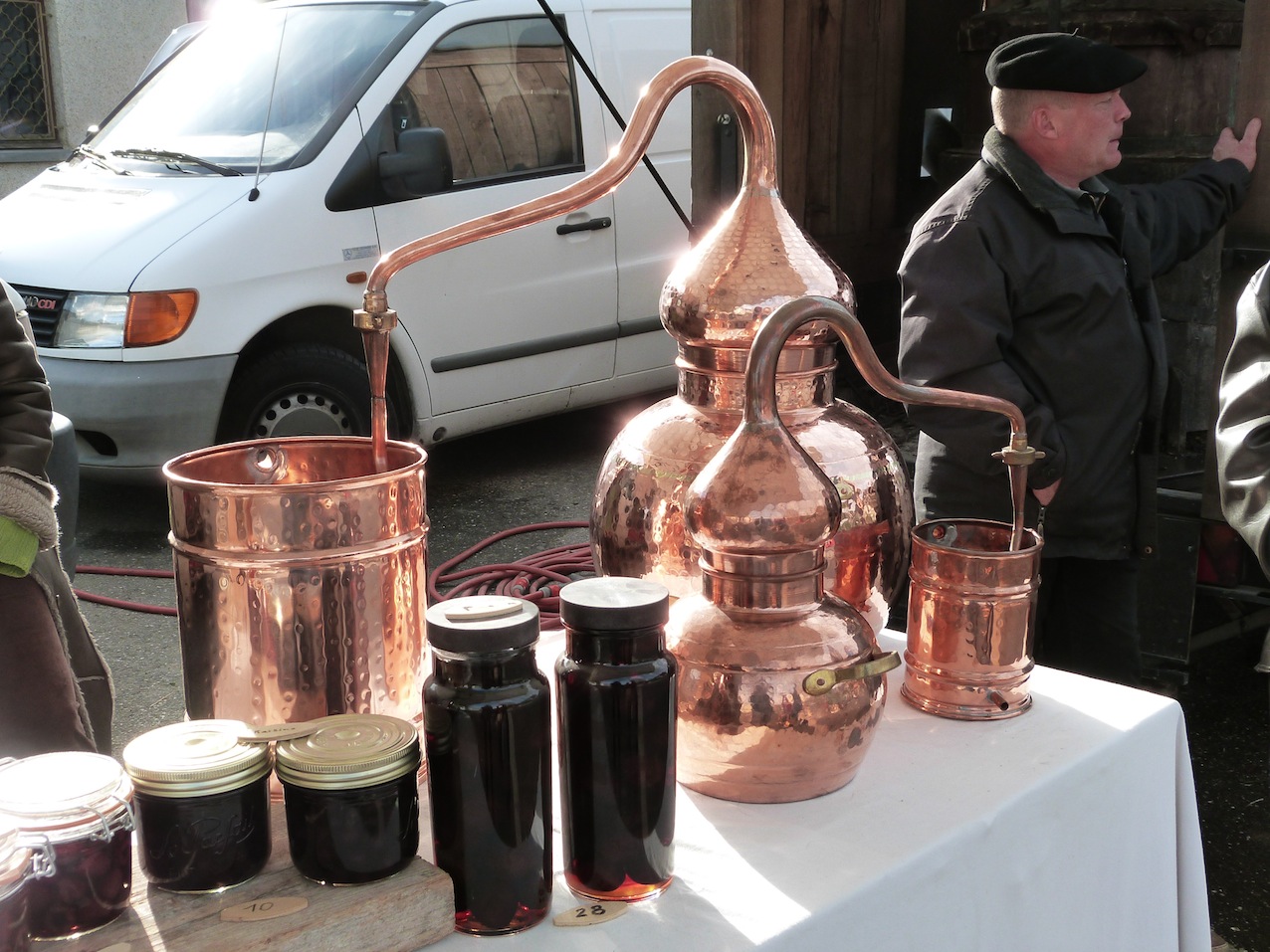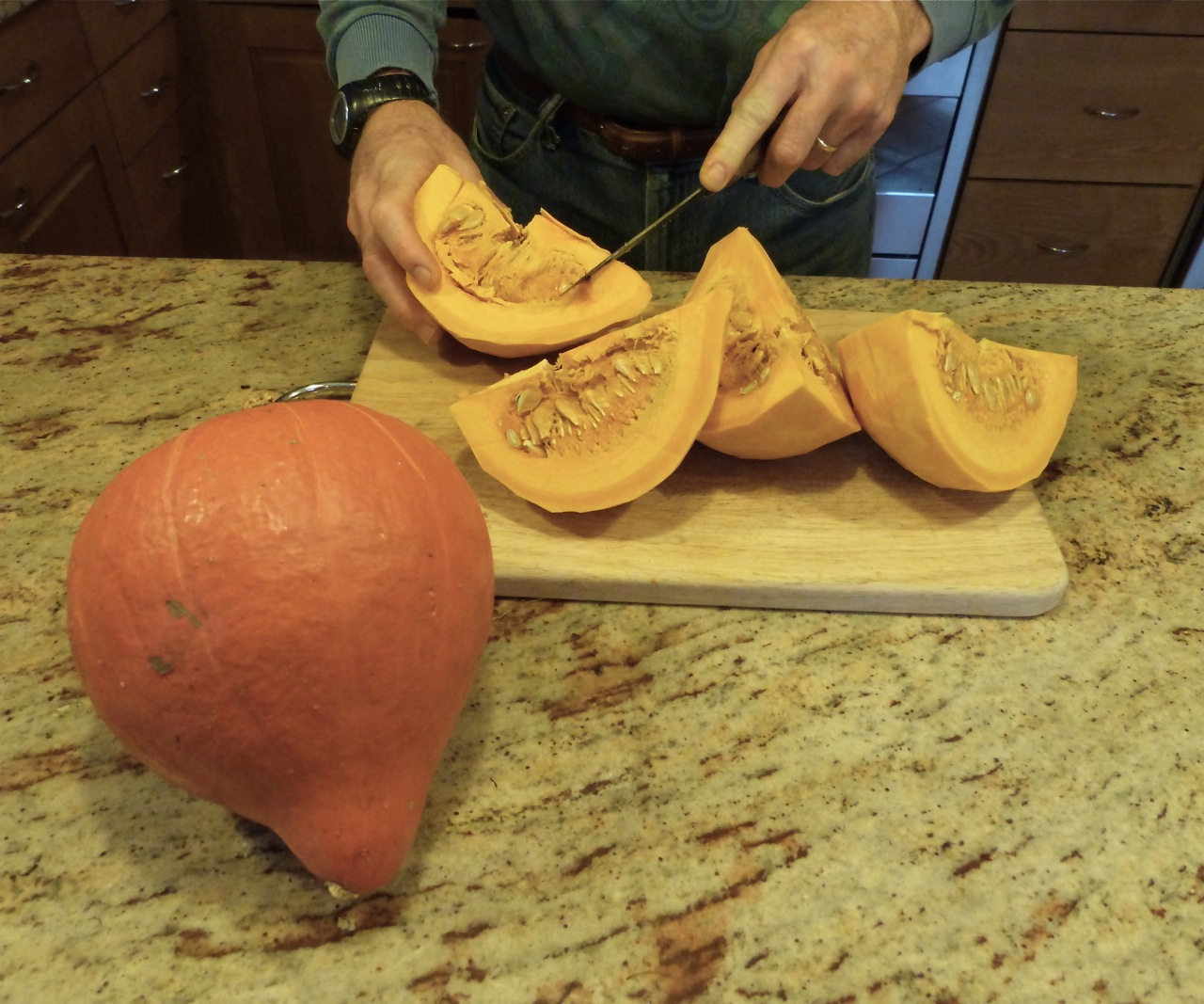Many years ago a family employee set out to defend the vegetable garden. He was a handy man philosopher who engaged in occasional ponderings about ends justifying means. But he was also a self-avowed Anarchist who spent a lot of time in the Foreign Legion, so I can’t pretend to understand much about his solipsistic ruminations.
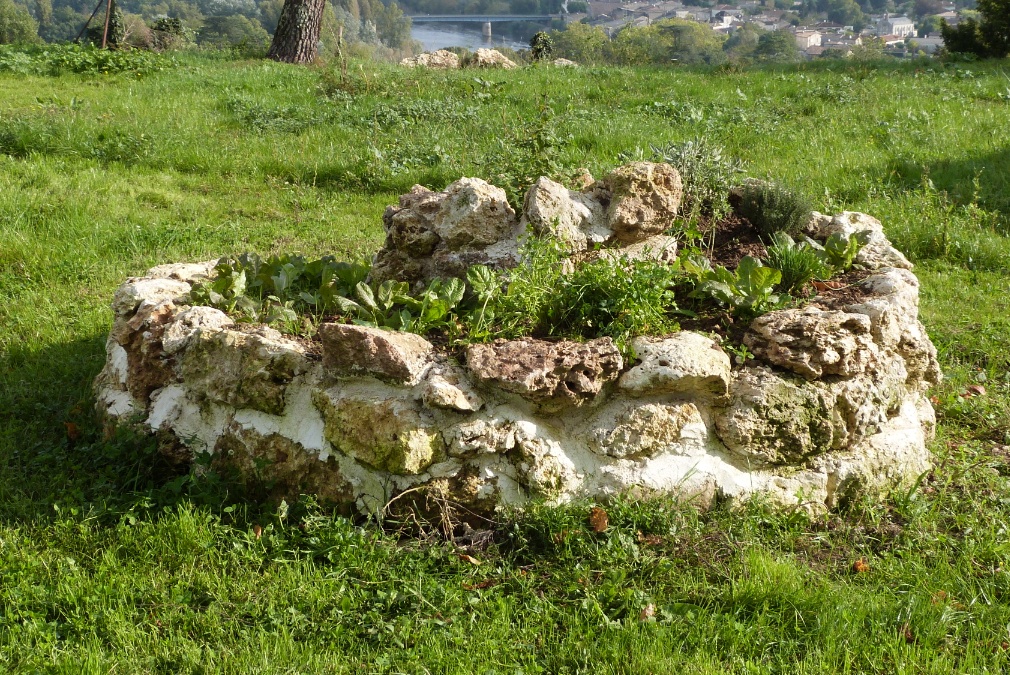
Certainly it was tiresome to find that the rabbits had gotten into the carrots again. How he came to the decision to install an electric fence is a bit of a mystery; sadly I was not around at the time. Perhaps it was kin to his enthusiasm for setting explosives to kill off the moles. They were also tiresome, with their burrows and countless little dirt mounds laying an obstacle course for the lawnmower.
But it was clear something had run much amuck the morning I discovered a small hedgehog paralyzed on the electric wire. We freed the creature and after a while he tottered off. His family had been living near the old barn for as long as I can remember, but with this accident that was the last we ever saw of them.
In time, we parted ways with the military man, planted our own gardens and also raised children. Trial and error and success and trial again have helped us appreciate the power of the bounty hypothesis. If you provide your children or your plants with good food and air and energy, and you have a little luck, they should be able to resist the ordinary attacks on their health and grow strong and bountiful. Concerning the specifics of vegetables, we’re learning to use certain plants and concoctions that repulse the bad insects without killing off the good ones, like ladybugs. If the predators leave us enough to compensate our efforts, i.e. with bounty to share, then I’m fine with the bargain.

But this still hasn’t solved the conscience-nagging problem of the hedgehogs.
So last summer we looked around at our many piles of old rocks and decided to build our own herb garden/wildlife refuge. We call it the snail shell because of the curve like a nautilus. The idea came from my favorite nature magazine “Les 4 Saisons du Jardin Bio” published by Terre Vivante www.terrevivante.org – a wonderful reference site for the old knowledge our grandparents would impart if they were still around, or our high-tech-competent, environment-loving children if they lived next door.

We wanted a pretty herb garden close enough to the kitchen to be able to run out quickly for a few snips of tarragon to add to the roast chicken.* When I learned that this stone nautilus might also serve as a refuge for wild honeybees and lizards and lady bugs and HEDGEHOGS, we got out our wheelbarrows.
Step One: argue passionately about design and placement. Isn’t that life, when there’s a good idea, everyone wants to own it. John and Henri have become experts with natural mortar but the art was in selecting the stones by size and shape in order to make a wall the old fashioned way, like the dry walls that inspired Robert Frost. For us, less mortar meant more thought and more work, but also more crevices to entice more critters inside.
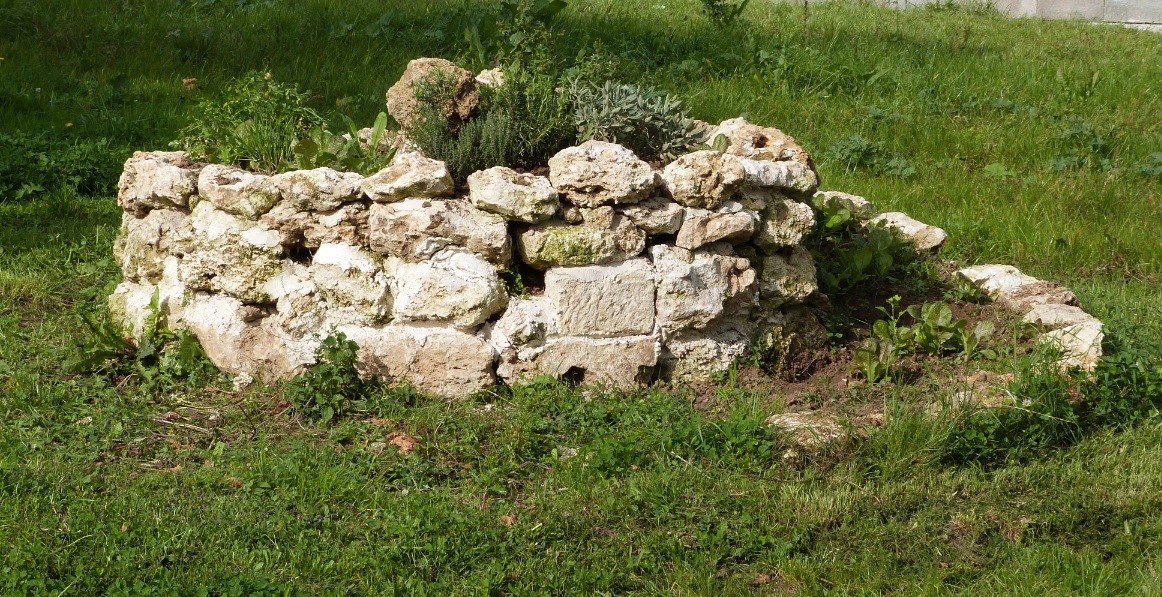
Thanks to some surviving moles we had plenty of nicely ground up earth to mix with our compost and the farmer’s mature cow manure/hay mulch. Almost instantly, the nautilus was colonized by wild winter lettuces. These are an old rustic variety that re-seeds itself each year and tends to pop up in the middle of the grass. We pluck them for dinner before mowing the lawn.
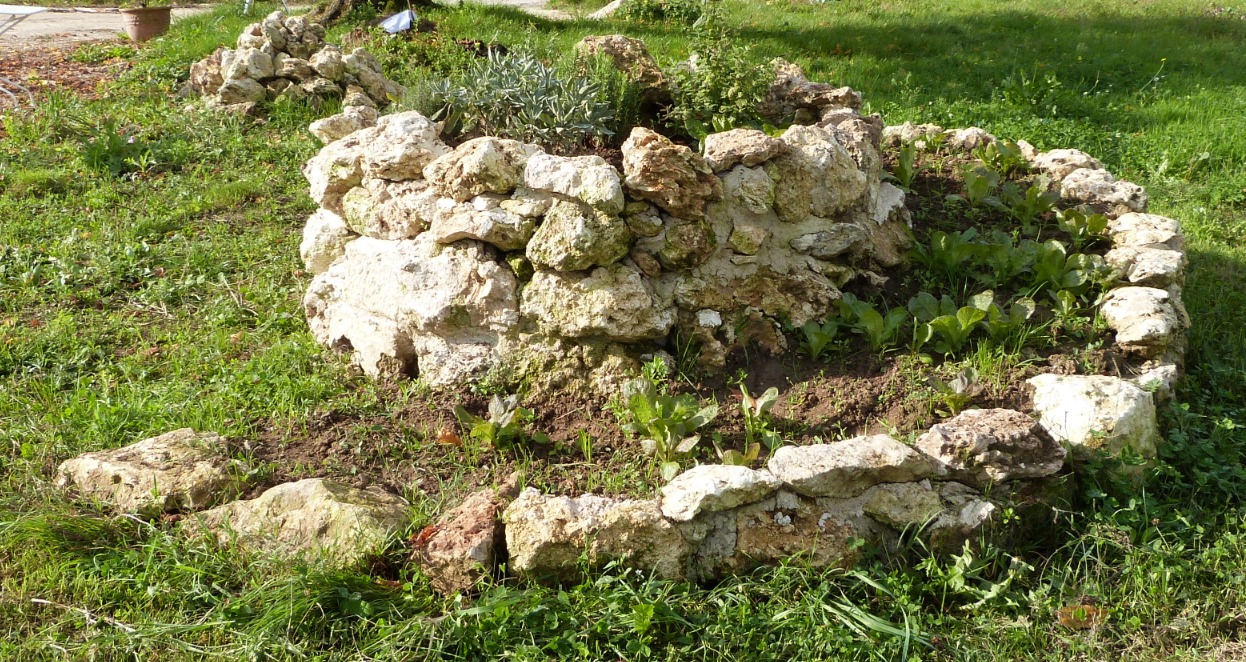
They thrive amidst the herbs we’ve transplanted so far – rosemary, thyme, sage, parsley, chives and some mint I found growing wild in a pasture. In the spring we’ll add flowers and summer herbs like basil.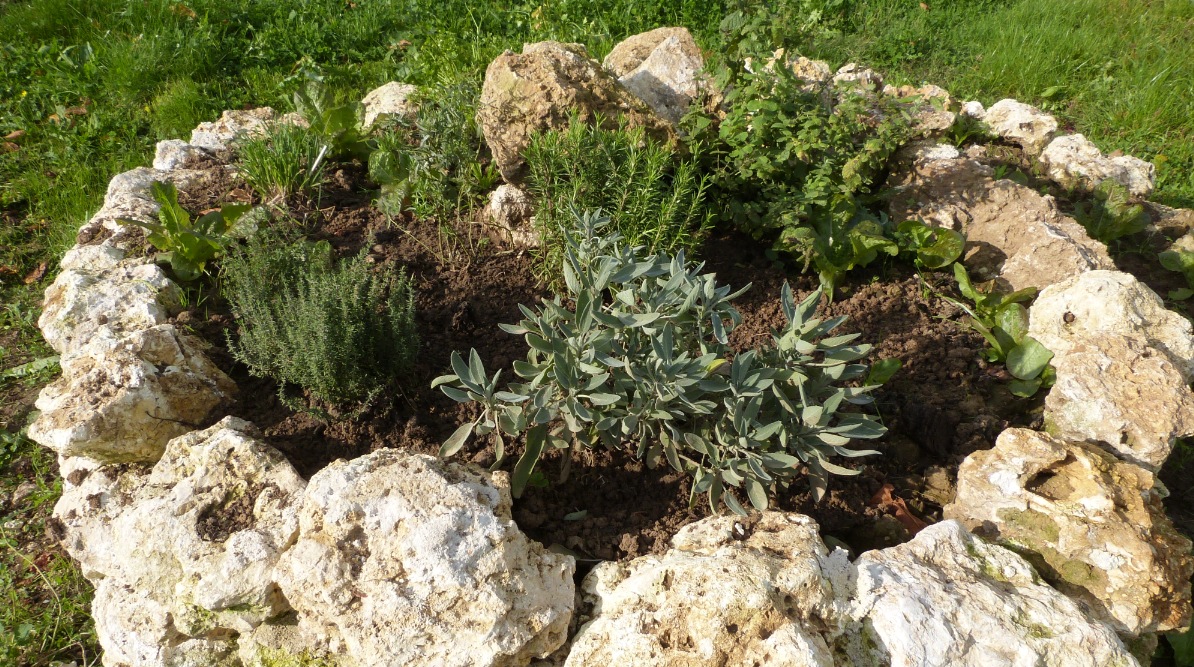
For now I’m on the lookout at the kitchen window. Waiting impatiently for my old friend Mrs. Tiggywinkle to take up residence.

* about tarragon and roast chicken: John’s mother used to insert it under the skin before roasting. This is something of a skill-intensive surgical procedure. We’ve found it’s almost as good if you drop a few sprigs into the drippings when the chicken is half way through cooking. Subtle but heavenly.

